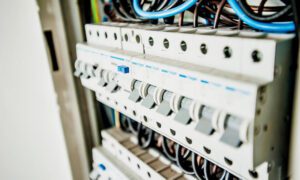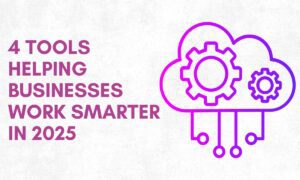Utility companies increasingly rely on drones to monitor infrastructure, including high-voltage power lines, substations, and transformers. This shift enhances safety, cuts costs, and improves efficiency in energy management. Traditional inspections require workers to climb transmission towers or manage remote locations, exposing them to risks. Drones eliminate these dangers by providing real-time aerial assessments, reducing the need for hazardous manual inspections.
Drones allow companies to quickly detect maintenance issues, such as corroded components, overheating equipment, or vegetation encroachment on power lines. When these challenges are ignored, they can result in service disruptions, costly repairs, and even dangerous accidents. Conducting frequent and detailed inspections keeps operations in line with regulatory standards while reducing the likelihood of unexpected failures.
Cost Savings and Increased Efficiency in Monitoring
Drones have become a game-changer in cutting infrastructure inspection costs. Instead of relying on manual inspections, utility companies can use drones to save significantly on labor costs. Businesses that invest in commercial drone services gain access to real-time evaluations, allowing them to identify issues before they escalate.
Drones also simplify logistics by cutting down on truck and helicopter usage for inspections, leading to significant fuel savings and lower vehicle maintenance costs. By embracing this technology, companies can reduce costly site visits and allocate resources more efficiently.
Preventing Power Outages and Equipment Failures
Drones are invaluable in catching early signs of wear and tear on power lines and substations. Equipped with high-resolution cameras and thermal imaging, they detect corrosion, frayed cables, and overheating components before they fail. This proactive approach prevents blackouts, reduces emergency repair costs, and keeps homes and businesses powered without disruption, maintaining a stable and reliable energy supply.
Another major risk is overgrown vegetation. Drones can quickly scan areas for encroaching trees, while thermal imaging spots overheating components. Taking action early reduces emergency repair costs and improves reliability. Regular drone inspections help keep power systems running smoothly.
Improving Safety in Risky Environments
Drones are a huge win for worker safety. Utility employees often inspect high-voltage transmission towers, aging substations, or power lines stretching across rough terrain. These tasks involve climbing tall structures or managing unstable ground. By deploying drones equipped with high-resolution cameras and infrared sensors, companies can assess these areas thoroughly without exposing workers to falls, electrocution, or extreme weather conditions.
After hurricanes, wildfires, or earthquakes, drones provide fast damage assessments, identifying downed power lines, compromised substations, and weakened transmission towers. This speeds up recovery efforts by allowing repair crews to focus on the most vital areas first while keeping personnel safe.
Meeting Regulatory and Environmental Standards
Drones make it easier for utility companies to follow government regulations. Their efficiency helps meet compliance requirements while using fewer resources. Since drones reduce the need for heavy machinery during inspections, they also have a smaller environmental footprint, making them a more sustainable choice.
Drone-generated reports play a central role in compliance audits, providing high-resolution images of habitats near power lines, wetlands, and protected forests. These detailed visuals help utility companies address concerns about wildlife migration patterns and environmental disturbances. Establishing a routine drone monitoring schedule supports compliance with conservation laws while demonstrating a proactive commitment to preserving ecosystems.
Better Data Collection and Smarter Decision-Making with AI
Pairing AI with drones takes infrastructure monitoring to the next level. AI-powered analysis quickly detects rust buildup on transmission towers, cracks in insulators, and excessive vibration in transformers before they lead to system failures. Faster data processing allows companies to schedule precise maintenance, preventing costly repairs and extending the lifespan of essential infrastructure.
Integrating drones with smart grid systems improves reliability by providing continuous, real-time monitoring of power lines and substations. Automated reports reduce human error by instantly flagging issues, like overheating transformers or corroded components, before they cause outages. AI-driven drone technology helps utility companies stay ahead of maintenance needs, optimizing long-term planning and keeping energy delivery stable and efficient.
Utility companies are turning to drones to monitor power lines and equipment more safely and efficiently. Instead of risky, time-consuming inspections, drones provide quick, real-time views, helping workers avoid dangerous situations while cutting costs. With high-resolution cameras and thermal imaging, they spot overheating transformers, damaged parts, and overgrown trees before they cause outages or expensive repairs. Drones also help companies follow regulations and reduce environmental impact. Paired with AI, they detect problems early, making maintenance faster and preventing major breakdowns. Companies using drones can fix issues sooner, keep the power running, and make better use of their resources, creating a safer and more reliable energy system.



































